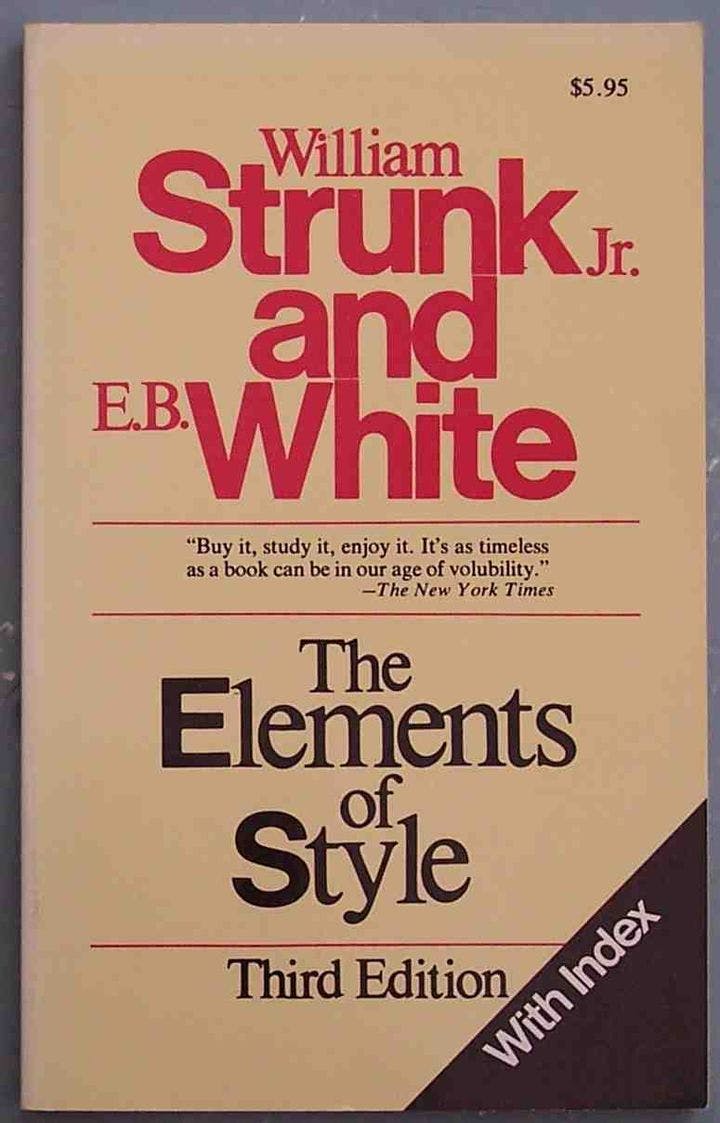Summer 2009
The Grammarians Have No Clothes
– The Wilson Quarterly
Strunk and White may have been influential, but one scholar thinks they based their grammar rules on "intuition and prejudice."
After 50 years, the influence of William Strunk and E. B. White’s Elements of Style is not to be denied by us.
If that sentence makes you cringe, you are either a well-grounded grammarian or, more likely, part of the legion of college graduates who regard Strunk and White’s slim volume as the essential guide to English usage. In Geoffrey K. Pullum’s opinion, the book does not deserve its enormous esteem. Not only has it “not improved American students’ grasp of English grammar; it has significantly degraded it.”
William Strunk Jr. taught English at Cornell University in the early 20th century, and privately published the first edition of Elements of Style in 1918. Many years later, when Strunk’s student, E. B. White, wrote a nostalgic piece about his former professor for The New Yorker, he was invited to revise and expand the style guide for commercial publication. As Pullum reports, “It took off like a rocket (in 1959) and has sold millions.” But Pullum, coauthor of The Cambridge Grammar of the English Language (2002) and head of linguistics and English language at the University of Edinburgh, says the book’s popularity was unfortunate, “because both authors were grammatical incompetents. Strunk had very little analytical understanding of syntax, White even less,” even though, as Pullum acknowledges, White was a skilled writer, author of, among other books, the much-admired Charlotte’s Web (1952).
Proof of Strunk’s and White’s shortcomings as grammarians can be found throughout Elements of Style, Pullum says. “Use the active voice,” the authors command in one of the book’s most familiar sections, even as they admit that the passive voice is “frequently convenient and sometimes necessary.” But Pullum finds it troubling that the bias against the passive “is being retailed by a pair of authors so grammatically clueless that they don’t know what is a passive construction and what isn’t.” Three of the four examples used to illustrate its evils are not passive constructions. (In “The reason that he left college was that his health became impaired,” impaired is “fingered as passive” though “it’s an adjective here.” Bonus grammar tip: The presence of the verb “became” makes a following passive clause impossible.)
Pullum says the book “is so misguided that the authors appear not to notice their own egregious flouting of its own rules.” Strunk and White urge students to “write with nouns and verbs, not with adjectives and adverbs.” This edict is followed in the next sentence by a clause with three adjectives wrapped around a negative passive: “The adjective hasn’t been built that can pull a weak or inaccurate noun out of a tight place.” (Pullum awards this prose pearl a fourth strike for violating another commandment: “Keep related words together.”)
Pullum believes that Strunk and White based “their grammar claims on intuition and prejudice rather than established literary usage.” He tests one instruction—“With none, use the singular verb when the word means ‘no one’ or ‘not one’”—by searching the texts of Oscar Wilde’s Importance of Being Earnest, Bram Stoker’s Dracula, and Lucy Maud Montgomery’s Anne of Avonlea. All contain examples of plural agreement with “none.” The example from Wilde’s play seems particularly apt: “None of us are perfect.”
“The uninformed bossiness of Strunk and White,” Pullum says, has bred ignorance and needless anxiety. “English syntax is a deep and interesting subject . . . much too important to be reduced to a bunch of trivial don’t-do-this prescriptions by a pair of idiosyncratic bumblers who can’t even tell when they’ve broken their own misbegotten rules.”
THE SOURCE: “Fifty Years of Stupid Grammar Advice” by Geoffrey K. Pullum, in The Chronicle Review, April 17, 2009.
Photo courtesy of Flickr/Chris Drumm
